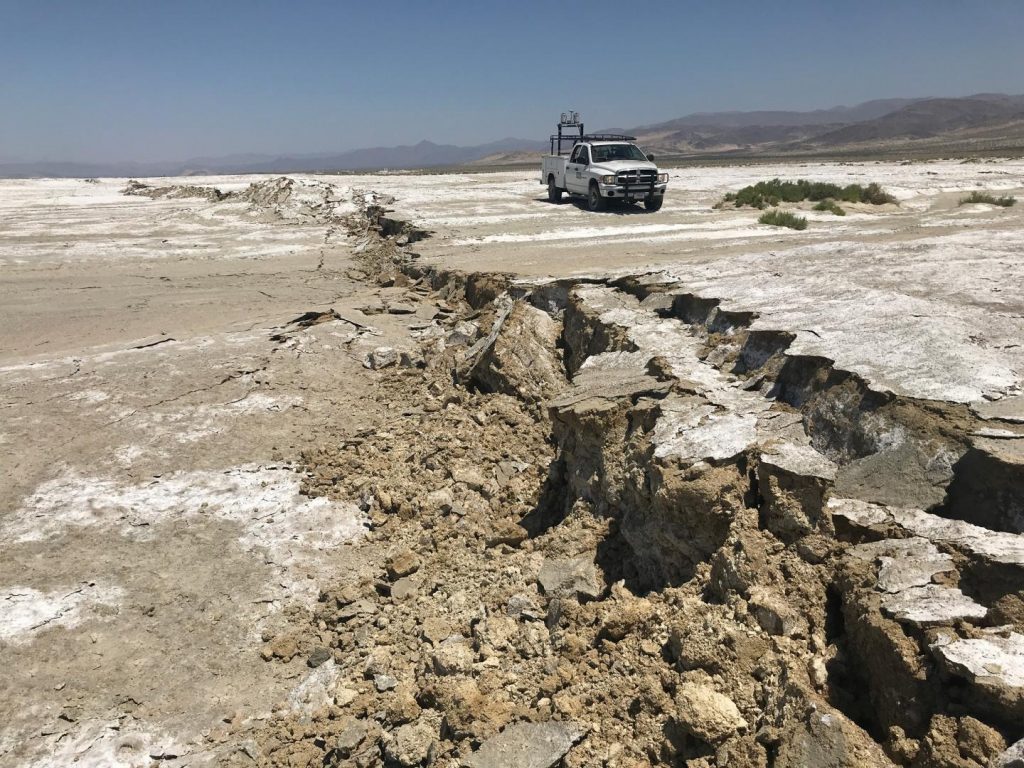3 December 2019–Each hair-thin glass fiber in a buried fiber optic cable contains tiny internal flaws—and that’s a good thing for scientists looking for new ways to collect seismic data in places from a busy urban downtown to a remote glacier.
In Seismological Research Letters, California Institute of Technology seismologist Zhongwen Zhan describes growing interest in this method—called Distributed Acoustic Sensing—and its potential applications. His paper is part of the journal’s Emerging Topics series, in which authors are invited by SRL editors to explore developments that are shaping various areas of seismology and earthquake science.
DAS works by using the tiny internal flaws of a long optical fiber as thousands of seismic sensors along tens of kilometers of fiber optic cable. An instrument at one end sends laser pulses down a cable and collects and measures the “echo” of each pulse as it is reflected off the internal fiber flaws.
When the fiber is disturbed by changes in temperature, strain or vibrations—caused by seismic waves, for instance—there are changes in the size, frequency and phase of laser light scattered back to the DAS instrument. Seismologists can use these changes to determine the kinds of seismic waves that might have nudged the fiber, even if just by a few tens of nanometers.
The sensitivity of DAS instruments has improved markedly over the past five years, opening new possibilities for their deployment, Zhan said. “The sensitivity is getting better and better, to the point that a few years ago that if you compare the waveforms from a fiber section with a geophone, they look very similar to each other.”
Their performance makes them suitable for use across a variety of environments, especially in places where it would be too expensive to set up a more sensitive or dense seismic network. Researchers can also tap into the large amounts of unused or “dark” fiber that has been laid down previously by telecommunication companies and others. A few strands off a larger cable, said Zhan, would serve a seismologist’s purposes.
Zhan said the oil and gas industry has been one of the biggest drivers of the new method, as they used cable down boreholes to monitor fluid changes in deep-water oil fields and during hydraulic fracturing and wastewater injection.
DAS researchers think the method is especially promising for seismic monitoring in harsh environments, like Antarctica—or the moon. With a regular network of seismometers, scientists “need to protect and power each node” of instruments in the network, Zhan explained. “Where for DAS, you lay down one long strand of fiber, which is fairly sturdy, and all your sensitive instruments are only at one end of the fiber.”
“You can imagine that on the moon or some other planet, with a high radiation or high temperature scenario, the electronics might not survive that long in that environment,” he added. “But fiber can.”
Scientists are already using DAS to probe thawing and freezing cycles in permafrost and on glaciers, to better characterize their dynamic motion of ice flows and sliding on bedrock, which could help researchers learn more about how glacial melt driven by climate change contributes to sea level rise.
At the moment, the range of most DAS systems is 10 to 20 kilometers. Researchers hope to extend this in the near future to 100 kilometers, Zhan said, which could be useful for seismic coverage in ocean bottom environments, including offshore subduction zones.

DAS is also well-suited for rapid response after earthquakes, especially in areas where dark fiber is numerous and seismologists have made arrangements to use the fiber beforehand. After the 2019 Ridgecrest earthquakes in southern California, for instance, Zhan and his colleagues moved quickly to monitor the aftershock sequence in the area using DAS. “We turned about 50 kilometers of cable into more than 6,000 sensors in three days,” he said.
If seismologists have done their legwork in identifying and requesting access to fibers ahead of time, Zhan said, a DAS system can be deployed within a few hours after an earthquake.
One challenge in using fiber is knowing exactly how it lies in the ground. With the DAS method, researchers know how far along a fiber a particular sensor lays, but if the fiber optic cable is coiled or bent or sagging, the calculations could be off. To remedy this, seismologists sometimes do a “tap test”—which maps sledgehammer blows along the ground above the cable with GPS, as the blows reverberate off the fiber to create a sort of sonar image of its twists and turns.
DAS sensors also contain more “self-noise”—background seismic signals that could interfere with an earthquake identification—than traditional seismic sensors, “but frankly we don’t exactly know why,” said Zhan. Some of the noise might come from the interrogating laser pulses, which might not be stable, or from the cable itself. Some cables lie loose in their tunnels, and other have multiple fiber connectors, which might produce reflection and loss of the light signal.
“While still in its infancy, DAS already has shown itself as the working heart – or perhaps ear drums – of a valuable new seismic listening tool,” Zhan concluded.
